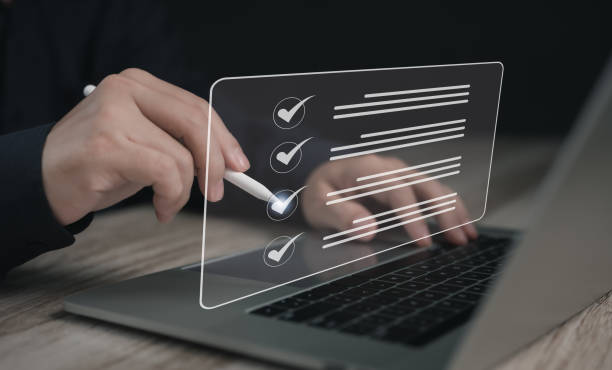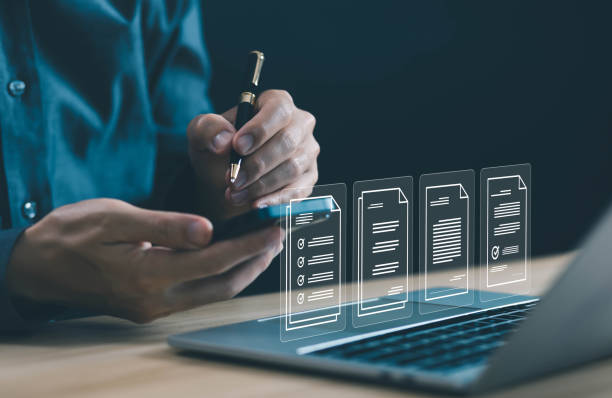Fundamental Importance of On-Page SEO and Its Impact on Site Ranking
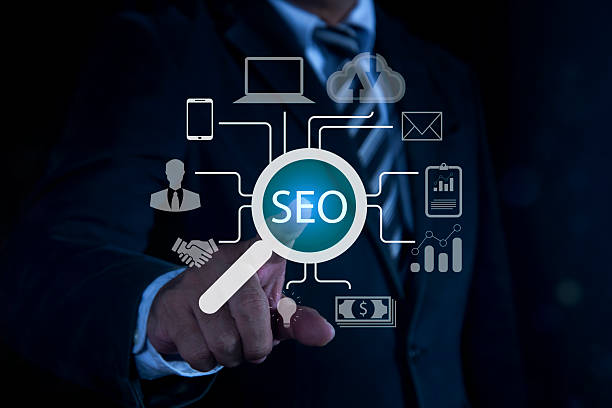
In today’s highly competitive web world, an online presence doesn’t just mean having a website; being seen among thousands of similar websites is of paramount importance.
This is where the concept of SEO, or Search Engine Optimization, comes into play.
Specifically, On-Page SEO refers to a set of actions performed within your website and on its content to improve its ranking in search results.
These actions include optimizing keywords, content quality, URL structure, title tags and meta descriptions, and image optimization.
The main goal of On-Page SEO is to help search engines better understand your page content and also to provide an excellent user experience to visitors.
Without a foundational and comprehensive strategy in On-Page SEO, even the best content may disappear amidst a deluge of information.
Understanding how Google and other search engines crawl, index, and rank websites is the cornerstone of any successful SEO campaign.
In this section, we will explain why investing time and resources in optimizing your website’s internal pages is not just an option, but a necessity for visibility and attracting organic traffic.
This process is the foundation of any successful SEO strategy, and without it, off-page SEO efforts will have less impact.
Therefore, understanding the basic principles and their application is crucial for every webmaster and digital marketing specialist.
Do you dream of a thriving online store but don’t know where to start?
Rasaweb is your comprehensive e-commerce website design solution.
✅ Attractive and user-friendly design
✅ Increased sales and revenue⚡ Get free consultation
Keywords: The Backbone of On-Page SEO

The correct selection and use of keywords are the beating heart of any successful On-Page SEO strategy.
Without appropriate keywords, search engines cannot understand what your content is about or which searches it answers.
The first step in this regard is comprehensive keyword research.
This process involves identifying the phrases and words your target audience types into search engines to find information related to your business or content.
Various tools such as Google Keyword Planner, Ahrefs, Semrush, or KWFinder can assist you in this stage.
The goal is not only to find keywords with high search volume but also to look for words that have a strong semantic connection to your content and have reasonable competitiveness.
After identifying primary and secondary keywords, the next step is their strategic placement within the content.
The main keyword should be used naturally and without over-optimization in the page title, meta description, headings (H1, H2, H3), the first paragraph, and throughout the content.
Keyword Density should be balanced to avoid penalties from search engines.
Using LSI (Latent Semantic Indexing) keywords or synonymous and related keywords also helps search engines better understand the main topic of the page.
This is a guiding and specialized approach that helps you rank not only for a specific keyword but for a wide range of related searches.
Finally, remember that the main goal is to provide valuable and relevant content for the user, not just to stuff the page with keywords.
Content Optimization for On-Page SEO and User Experience
![]()
Content is king, and optimizing it for On-Page SEO not only helps search engines better understand your page but also significantly improves the user experience.
Optimized content has high readability, is well-structured, and provides useful information to the user.
Starting with HTML structure, the correct use of H1 tags for the main title, and H2 to H6 for subheadings, helps search engines and users understand the hierarchy and main topics of the content.
Short paragraphs and clear sentences make the text easier to read, and using bulleted or numbered lists also helps increase readability.
Another foundational and vital aspect of content optimization is image optimization.
Images should have descriptive alternative tags (Alt Text) that include relevant keywords.
These tags are not only important for image SEO but also help visually impaired individuals understand the image content.
Compressing images to reduce file size without compromising quality is also essential for page loading speed.
Overall, high-quality content optimized for On-Page SEO not only achieves better rankings but also reduces bounce rate and increases user engagement.
Below is a specialized checklist table for content optimization for On-Page SEO:
| Optimization Element | Description | Importance |
|---|---|---|
| Keywords | Research and natural use in text, title, and meta descriptions. | High |
| Content Quality | Unique, comprehensive, useful, and original content. | Very High |
| Heading Structure (H1-H6) | Logical use for content organization and improved readability. | Medium to High |
| Image Optimization | Compression, appropriate Alt Text, and descriptive file names. | Medium |
| Internal Linking | Linking to relevant internal pages with appropriate anchor text. | High |
Technical Aspects of On-Page SEO from a Developer’s Perspective

Beyond content, the technical aspects of On-Page SEO play a crucial role in how your website is crawled and indexed by search engines.
These elements, primarily considered from a developer’s perspective, include URL structure, robots.txt files, and sitemaps.
A clear and descriptive URL structure that includes the main keyword is not only more understandable for users but also helps search engines grasp the page’s topic.
Avoiding long and complex URLs that contain many parameters is recommended.
The robots.txt file is a text file that tells search engines which parts of your website they can crawl and which they cannot.
Correct use of this file can prevent crawling of unnecessary or private pages and direct your Crawl Budget towards more important pages.
On the other hand, XML Sitemaps provide search engines with a list of all important pages on your website, helping them fully understand your site’s structure and faster discover new content.
Correct implementation of Canonical tags to prevent duplicate content, and the use of Schema Markup to help search engines display richer results (Rich Snippets) in SERP, are also considered specialized and analytical actions in this area that directly impact your On-Page SEO performance.
Are you tired of your company’s website not being seen as it deserves, losing potential customers? Solve this problem forever with professional and effective website design by Rasaweb!
✅ Increase brand credibility and gain customer trust
✅ Attract targeted sales leads
⚡ Contact us now for a free consultation!
Page Load Speed and Responsiveness

In today’s digital age, speed is paramount.
Users expect web pages to load in a fraction of a second, and search engines also consider this a crucial ranking factor.
Page load speed not only affects SEO but is also directly related to user experience, conversion rates, and bounce rates.
Slow sites drive users away and achieve lower rankings in search results.
Image optimization (compression, use of next-gen formats like WebP), code compression (HTML, CSS, JavaScript), browser caching, and CDN (Content Delivery Network) are among the most important measures that can significantly improve your site’s speed.
Tools like Google PageSpeed Insights and GTmetrix can help you analyze and provide practical guidance for improving site speed.
Furthermore, with the increasing use of mobile devices for internet access, website responsiveness (Responsive Design) has become essential.
Responsive design means that your website can automatically adapt to the user’s screen size (mobile, tablet, desktop) and provide an optimal viewing and interaction experience.
For years, Google has adopted Mobile-first Indexing as its primary approach, meaning it considers the mobile version of your website as the main version for evaluation and ranking.
Therefore, ensuring that your website is not only fast but also displayed correctly on all devices is a vital factor for your On-Page SEO and online success.
The Role of Internal Linking in Strengthening On-Page SEO
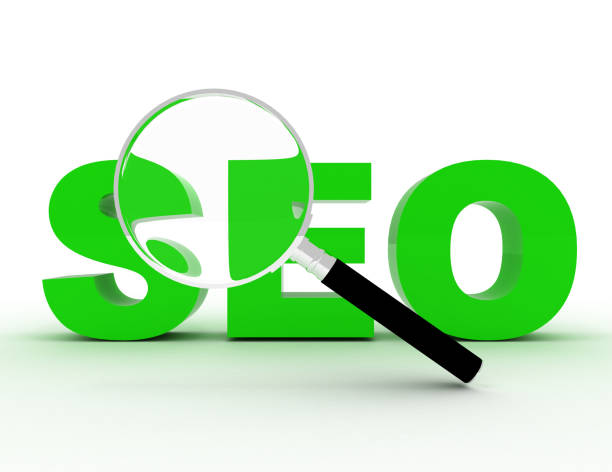
Internal Linking is one of the most powerful tools in the On-Page SEO toolkit, often overlooked.
Internal links are links that point from one page on your website to another page on the same website.
These links play multiple roles in improving SEO and user experience.
Firstly, they help search engines better understand your website’s structure and discover new pages.
This process facilitates the distribution of Page Authority, or Link Juice, throughout your site, lending authority to deeper and more important pages.
Secondly, proper internal linking helps users navigate your website easily and discover more relevant content.
This not only reduces the bounce rate but also increases the user’s time on site and sends positive signals to search engines.
When internal linking, using descriptive and relevant anchor texts that contain keywords is of high importance.
Avoid generic anchor texts like “click here” and use phrases that tell the user and search engine what the destination page is about.
This is a foundational and explanatory approach that demonstrates how you can significantly increase your site’s On-Page SEO power with a smart internal linking strategy, achieving not only better rankings but also improving user engagement.
Writing Engaging and Effective Title Tags and Meta Descriptions
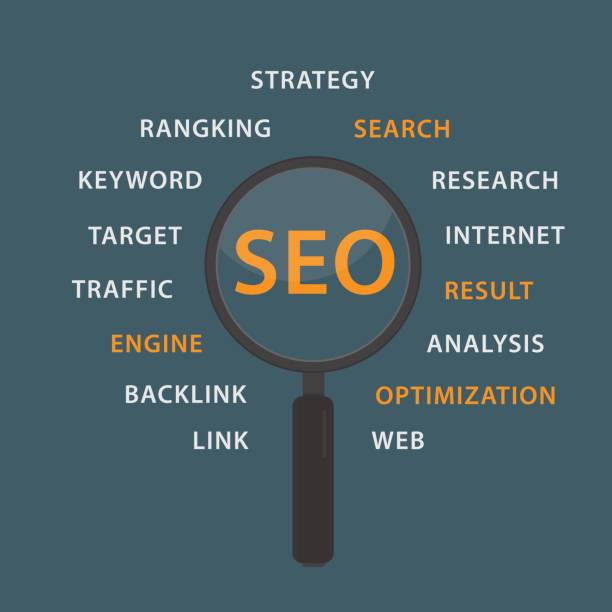
Title Tags and Meta Descriptions are the first impression users and search engines have of your page, and they play an extremely important role in On-Page SEO.
The title tag is the clickable title of your page in search results and should be short, descriptive, and contain the main keyword.
The optimal length for a title is usually between 50 and 60 characters to be fully displayed in search results.
The title should be attractive and persuasive to encourage users to click.
This factor directly impacts your Click-Through Rate (CTR), which is a crucial ranking signal for Google.
The meta description is a short and engaging summary of your page’s content that appears below the title in search results.
Although the meta description is not a direct ranking factor, it indirectly affects SEO; a good meta description can significantly increase CTR.
The recommended maximum length for a meta description is around 150 to 160 characters.
It should be concise and appealing, include the main keyword, and invite users to solve a problem or find the information they need on your page.
Writing good meta descriptions is an art and a science and requires guidance and expertise.
Below is a table of best practices for writing meta descriptions:
| Feature | Explanation | Key Points |
|---|---|---|
| Appropriate Length | Between 150 to 160 characters for full display. | Avoid text truncation. |
| Include Keyword | Use the main keyword or its synonyms naturally. | For search engines and highlighting. |
| Engaging and Persuasive | Encourage the user to click and answer their questions. | Increase Click-Through Rate (CTR). |
| Unique | Unique for each specific page. | Avoid duplicate content. |
Continuous Evaluation and Improvement of On-Page SEO Performance
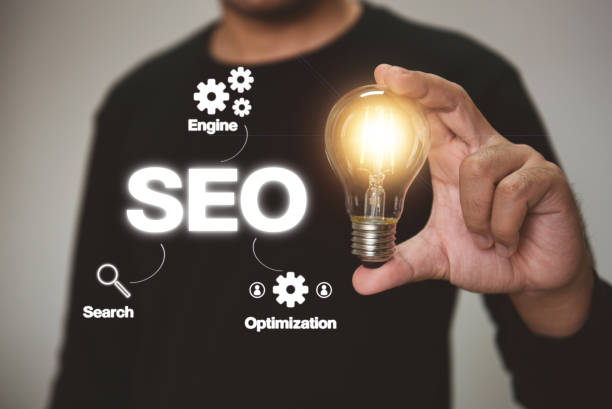
SEO is a dynamic process and requires continuous evaluation and improvement.
After implementing On-Page SEO strategies, monitoring performance and identifying opportunities for improvement are crucial next steps.
Using tools like Google Analytics and Google Search Console is essential for monitoring organic traffic, keyword rankings, bounce rate, and user behavior.
Google Search Console allows you to view the indexing status of pages, crawl errors, and the keywords users searched to reach your site.
This information provides the foundation for analytical decisions to improve your On-Page SEO strategy.
In addition to Google’s tools, paid SEO tools like Ahrefs, Semrush, and Moz also provide deeper insights into keyword rankings, competitor analysis, and internal linking opportunities.
Regularly monitoring Google algorithm updates and SEO industry news is also crucial for maintaining rankings and outperforming competitors.
These news updates can have significant impacts on your On-Page SEO performance.
Identifying underperforming pages, improving their content, and continuously optimizing for new or synonymous keywords are among the ongoing activities in this continuous improvement process.
Remember that SEO is a marathon, not a sprint; therefore, patience and perseverance in continuously evaluating and adapting your strategy are key to long-term success.
Are you tired of your e-commerce site having visitors but no sales? Rasaweb solves your main problem with professional e-commerce website design!
✅ Significant sales increase with targeted design
✅ Flawless user experience for your customers
⚡ Get a free consultation!
Engaging and Question-Provoking Content for Increased Interaction
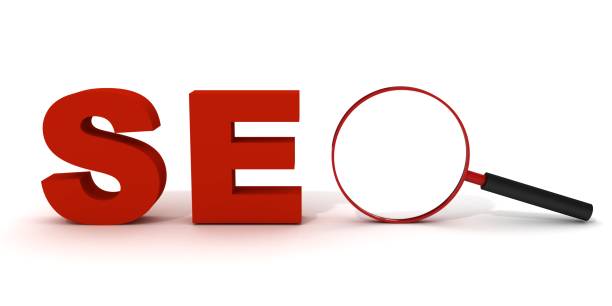
One of the interesting yet important aspects of modern On-Page SEO is the focus on creating question-provoking and interactive content.
Search engines are increasingly prioritizing user engagement signals, such as Dwell Time, Click-Through Rate (CTR), and Bounce Rate.
Content that prompts users to think, raises questions in their minds, and encourages them to stay and explore more on the site can improve these signals.
This type of content can include surveys, quizzes, interactive videos, dynamic infographics, or even active and engaging comment sections.
Creating question-provoking content means posing questions that your audience naturally seeks answers to, and then providing comprehensive and compelling answers within your content.
This approach can not only help you rank for Question Keywords but also increases your chances of appearing in Google’s Featured Snippets section (prominent answers at the top of search results).
The ultimate goal is to produce entertaining and useful content that not only attracts users but also keeps them on your website for a longer period.
This is not only beneficial for your On-Page SEO but also helps build a loyal community of followers.
Due to its engaging nature, this type of content has high potential for sharing on social media, which can increase your organic traffic and brand awareness.
Future Trends and the Outlook of On-Page SEO
![]()
The world of SEO is constantly evolving, and with the emergence of new technologies and changes in user behavior, On-Page SEO must also adapt to these trends.
One of the most important future trends is Artificial Intelligence (AI) and machine learning, which are making Google’s algorithms increasingly smarter.
Algorithms like BERT and MUM allow Google to better understand natural language and more accurately determine user search intent.
This means that your content should not only include keywords but also answer users’ actual questions and cover topics comprehensively and in depth.
Another trend is Voice Search, which is gaining increasing popularity.
Optimizing for voice search requires focusing on Long-Tail Keywords and question phrases that people naturally use in their daily conversations.
Video SEO is also growing, and platforms like YouTube have become powerful search engines.
Optimizing video titles, descriptions, tags, and even transcripts for relevant keywords can help increase the visibility of your video content.
Additionally, the concept of E-A-T (Expertise, Authoritativeness, Trustworthiness) has become more important for Google, especially in health and financial sectors.
Ensuring that your content is written by experts, cites reliable sources, and demonstrates your website’s authority is vital for long-term SEO success.
These points indicate current and analytical approaches to maintaining your site’s ranking in the future.
Frequently Asked Questions
| Question | Answer |
|---|---|
| What is On-page SEO? | On-page SEO refers to a set of actions performed within a website and on its page content to achieve better rankings in search results. |
| Why is On-page SEO important for a website? | On-page SEO helps search engines better understand your page content and assess its importance. It also provides a better user experience for visitors. |
| What are the most important On-page SEO factors? | The most important factors include keyword optimization, content quality, Title Tag, Meta Description, URL structure, heading tags (H1-H6), internal linking, and image optimization. |
| What role does the Title Tag play in On-page SEO? | The Title Tag is one of the most important On-page SEO factors that displays your page title in search results and browser tabs. It should include the main keyword and be engaging. |
| What is the importance of Meta Description in On-page SEO? | The Meta Description provides a summary of the page content, and although it doesn’t directly affect ranking, it can increase the Click-Through Rate (CTR) by encouraging users to click. |
| How are keywords used in On-page SEO? | Keywords are phrases that users use to search for information in search engines. Proper and natural use of them in content helps the search engine determine the page’s topic. |
| What is internal linking and what is its benefit in On-page SEO? | Internal linking means creating links between different pages of a website. This helps distribute page authority, assists search robots in crawling, and improves user experience. |
| How does image optimization affect On-page SEO? | Image optimization includes compressing file size, using appropriate Alt tags, and proper file naming. This improves page load speed and helps search engines understand image content. |
| What does high-quality content mean in On-page SEO? | High-quality content means content that is comprehensive, accurate, unique, up-to-date, and user-friendly, and fulfills user needs. |
| What role does URL structure play in On-page SEO? | Readable, short URLs that include the main keyword help search engines and users better understand the page content and improve the user experience. |
And other advertising agency services by Rasa Web in the field of advertising
Smart Advertising Campaign: A fast and efficient solution for customer acquisition focusing on Google Ads management.
Smart SEO: An effective tool for campaign management with the help of Google Ads management.
Smart UI/UX: A specialized service for increasing click-through rates based on user experience customization.
Smart Link Building: A professional solution for digital branding focusing on precise audience targeting.
Smart Digital Advertising: A blend of creativity and technology for customer acquisition through marketing automation.
And over hundreds of other services in internet advertising, advertising consultation, and organizational solutions
Internet Advertising | Advertising Strategy | Advertorial
Sources
Comprehensive Guide to Advanced On-Page SEO
Website On-Page SEO Optimization Techniques
Content Strategy for Effective On-Page SEO
Importance of Site Structure in On-Page SEO
? Rasaweb Afarin Digital Marketing Agency, your strategic partner on the path to online brilliance! With services such as professional SEO, social media management, and multilingual website design, we guarantee a powerful and influential online presence for your business. Contact us today and build the digital future of your business.
📍 Tehran, Mirdamad Street, next to Bank Markazi, Kazeroun Jonoubi Alley, Ramin Alley, No. 6

